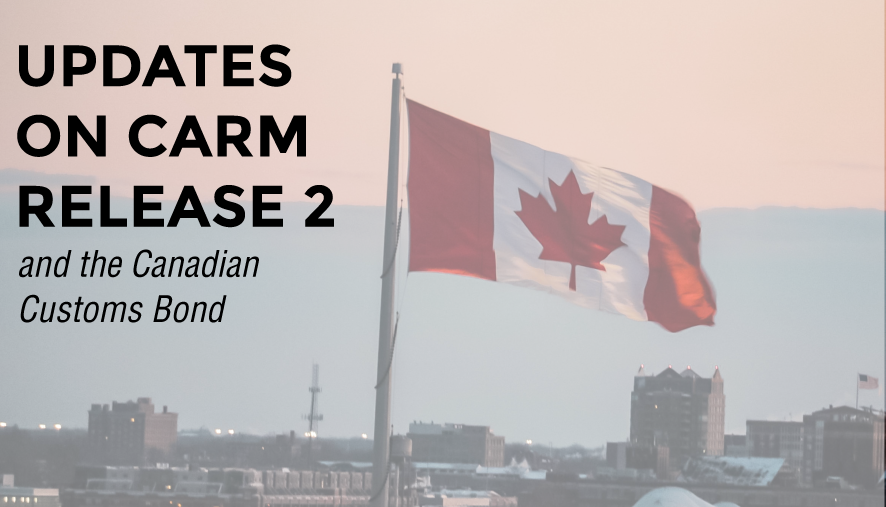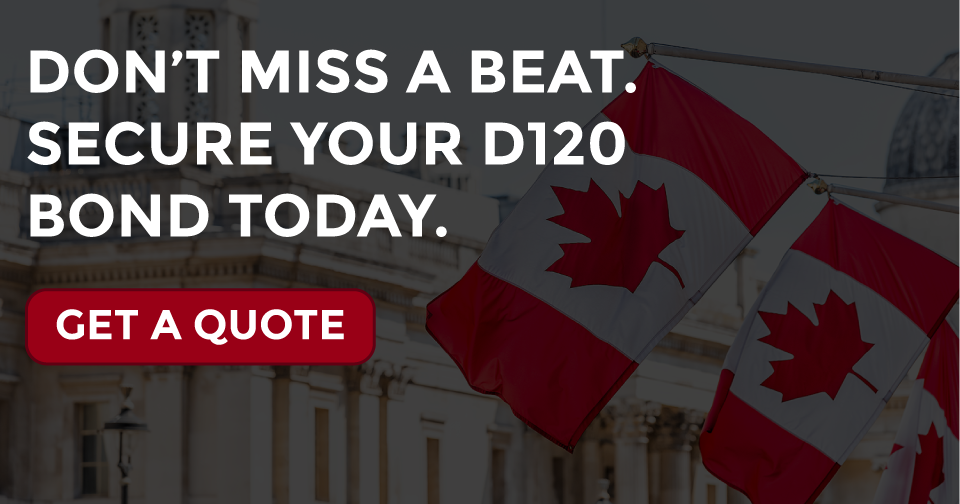TRG has received updated information regarding the CARM Release 2 and specifics for the Canadian Customs Bond.
During the live Q&A of our most recent webinar covering an Introduction to the Canadian Customs Bond, our team received a few questions from Canadian importers that we also needed answered. In addition to finding these answers, we also received some clarifying updates that need to be shared.
Updated Release Date for CARM Release 2
One of the biggest updates we received was a change for the date of CARM Release 2 which was originally set for Spring 2022. As we creep closer to that original deadline, Canadian Customs has decided to push back the release of CARM 2 to late 2022 or early 2023.
This updated deadline is most likely due to the completely understandable fact that the modernization process CBSA is currently undergoing takes a substantial amount of time and is almost guaranteed to hit roadblocks and delays. However, this pushed deadline does give Canadian importers much more time to get their Canadian Customs Bond in place.
One concern we have had throughout this process was the time it was taking for Canadian importers to receive approval from CBSA on their bond. While we would still recommend that importers get their bond in place sooner than later, they will now have more time to do this before the official deadline with CBSA.
How Will Canadian Customs Bond Increases be Handled?
In our recent webinar on the topic, we discussed the importance of considering your bond sufficiency and forecasting the duties you will pay in the coming year when calculating the bond size for your Release of Goods bond. One question the team at TRG had that the webinar attendees also shared, was how will increases be handled if your bond is deemed insufficient?
While we are very well versed in how bond insufficiency is handled with U.S. Customs Bonds, Our team reached out to CBSA for insight on this particular question. And there is good news!
Canadian Customs will allow for bond increases to be filed with a rider to an existing bond. Therefore, there will be no need to terminate and replace the bond on file which is necessary with a U.S. Customs bond. This should prevent further issues like stacking liability for Canadian importers if their bond is deemed insufficient.
Is GST Included When Calculating the Bond Size of the Canadian Customs Bond?
When considering GST, follow the chart below. The Future State is calculation that CBSA has released for Release 2.
| Current State (Prior to Release 2) |
Future State (After to Release 2) |
|
|---|---|---|
| Resident Importers |
100% of average monthly duties and taxes (excluding GST) over prior 12 months. |
50% of highest monthly duties and taxes (including GST) over prior 12 months. |
| Non Resident Importers |
100% of average monthly duties and taxes (including GST) over prior 12 months. |
50% of highest monthly duties and taxes (including GST) over prior 12 months. |
Therefore, the short answer here is that GST will be included in the calculation of the bond size for the Canadian Customs Bond.
What is the Minimum Size for a Canadian Customs Bond?
We have received many questions asking for clarification on the minimum bond requirement for the Release of Goods Bond. We now have further clarification on this topic that should help answer any unresolved questions.
The minimum bond size allowed under the Current State is $5k, but the minimum bond size under the Future State is $25k. Keep in mind that ‘Current State’ refers to our current state prior to the deadline for Release 2. While ‘Future State’ refers to the time after the deadline for CARM Release 2 and moving forward from there.
It is important to note that the premium for placing a $0 – $25k bond with a surety is the same. Therefore, placing a $25k bond not only costs the same, but also prepares you for the minimum that will be required in the Future State.
To apply for a Canadian Customs Bond with TRG, financials may not be required for bond sized 50k and less.





![[Webinar] 2023 Q2 International Trade Update](https://traderiskguaranty.com/trgpeak/wp-content/uploads/2023/08/2023.07_Q2-International-Trade-Update_Page_01-400x250.png)
![[Webinar] Status Update on the Canadian Customs Bond](https://traderiskguaranty.com/trgpeak/wp-content/uploads/2023/05/2023.05_Update-on-Canadian-Customs-Bonds_Page_01-400x250.png)
![[Webinar] An Introduction to the Canadian Customs Bond](https://traderiskguaranty.com/trgpeak/wp-content/uploads/2022/02/trg-webinar-cover-image-400x250.png)